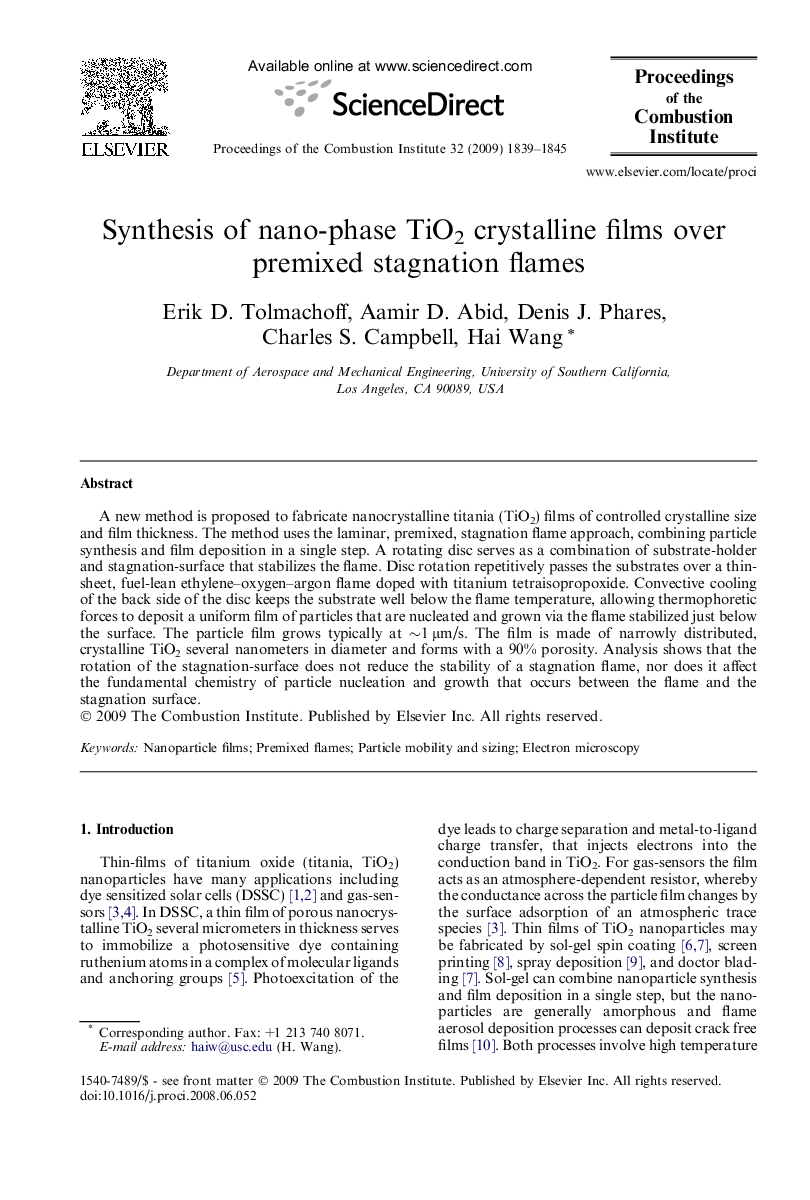| Article ID | Journal | Published Year | Pages | File Type |
|---|---|---|---|---|
| 241032 | Proceedings of the Combustion Institute | 2009 | 7 Pages |
A new method is proposed to fabricate nanocrystalline titania (TiO2) films of controlled crystalline size and film thickness. The method uses the laminar, premixed, stagnation flame approach, combining particle synthesis and film deposition in a single step. A rotating disc serves as a combination of substrate-holder and stagnation-surface that stabilizes the flame. Disc rotation repetitively passes the substrates over a thin-sheet, fuel-lean ethylene–oxygen–argon flame doped with titanium tetraisopropoxide. Convective cooling of the back side of the disc keeps the substrate well below the flame temperature, allowing thermophoretic forces to deposit a uniform film of particles that are nucleated and grown via the flame stabilized just below the surface. The particle film grows typically at ∼1 μm/s. The film is made of narrowly distributed, crystalline TiO2 several nanometers in diameter and forms with a 90% porosity. Analysis shows that the rotation of the stagnation-surface does not reduce the stability of a stagnation flame, nor does it affect the fundamental chemistry of particle nucleation and growth that occurs between the flame and the stagnation surface.
